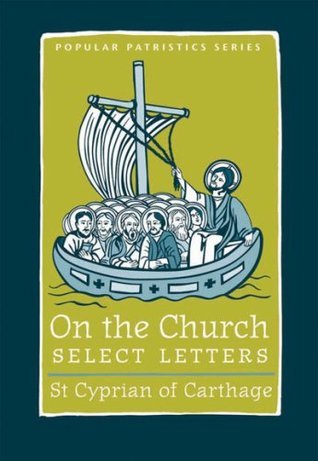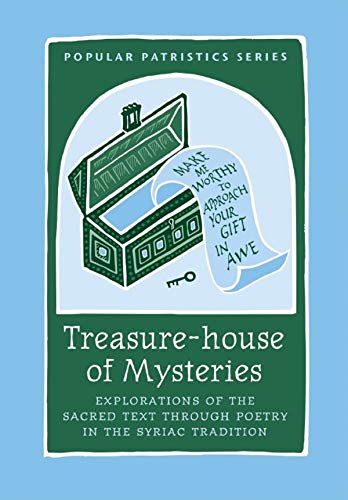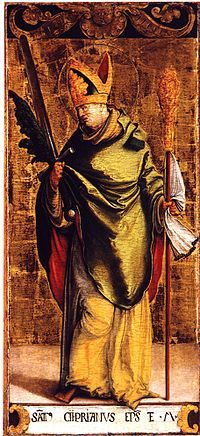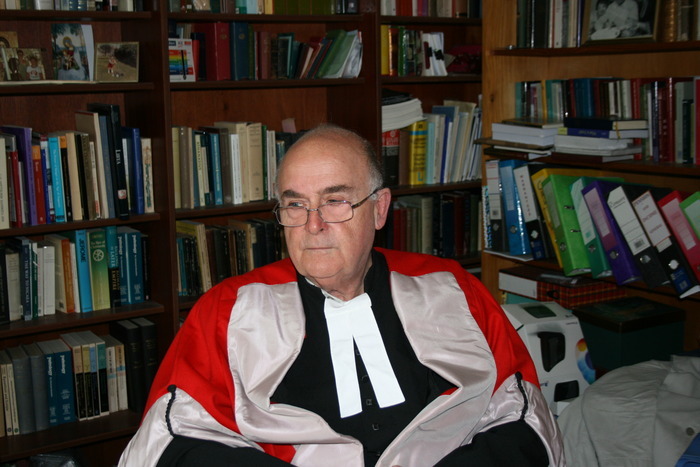


Books in series

Six Books on the Priesthood
1907

On the Holy Icons - Popular Patristics Series Volume 6
1981

On Marriage and Family Life
1986

On Wealth and Poverty
1984

St. Ephrem the Syrian
Hymns On Paradise
1976

On the Soul and the Resurrection
379

On the Dormition of Mary
Early Patristic Homilies
1997

On God and Christ
The Five Theological Orations and Two Letters to Cledonius
379

On the Divine Images
1980

Letters from the Desert
2003

Four Desert Fathers
2004

St. Macarius The Spirit Bearer
Coptic Texts Relating To Saint Macarius The Great
2004

On The Human Condition
2005

The Cult of the Saints
2006

On the Church
Select Treatises
2006

On the Church
Select Letters
2006

The Book of Pastoral Rule
600

Festal Orations (Popular Paristics Series)
2008

Counsels on the Spiritual Life
2011

On Social Justice
St. Basil the Great
2009

Harp of Glory
An African Akathist
2010

Divine Eros
2011

On the Two Ways Life or Death, Light or Darkness
Foundational Texts in the Tradition
2011

On the Holy Spirit
375

Works on the Spirit
2011

On the Incarnation
318

Treasure-house of Mysteries
Exploration of the Sacred Text Through Poetry in the Syriac Tradition
2020

On Fasting and Feasts
2013

On Christian Ethics
2015

Give Me a Word
The Alphabetical Sayings of the Desert Fathers
2014

Two Hundred Chapters on Theology
St. Maximus the Confesor
2015

On the Apostolic Tradition
300

On Pascha
With the Fragments of Melito and Other Material Related to the Quartodecimans
170

Letters to Saint Olympia
407

Testament of the Lord
Worship & Discipline in the Early Church
2019

On the Ecclesiastical Mystagogy
2019

Hymns of Repentance
2023
Authors


Brian Edward Daley, S.J. (born in 1940) is an American Catholic priest and theologian. He is currently the Catherine F. Huisking Professor of Theology at the University of Notre Dame and was the recipient of a Ratzinger Prize for Theology in 2012. Daley's primary academic field is Patristics, the study of the Fathers of the Church. The Patristic topics on which he has published include Christology, eschatology, Mariology, philanthropy, and scriptural exegesis. In addition to his academic commitments, Daley is active in ecumenical dialogue and serves as the executive secretary of the North American Orthodox-Catholic Theological Consultation. Background and education Daley was born in 1940 in Orange, New Jersey, USA.[citation needed] He attended the Jesuit-run St. Peter's Preparatory School and did his first undergraduate degree at Fordham University, where he received a B.A. in Classics in 1961. Daley was the first Fordham alumnus to receive a Rhodes Scholarship, which he used to read Literae Humaniores (also known as "Greats") at Merton College, Oxford. While there, he was tutored by the philosopher J. R. Lucas. He obtained a B.A. in 1964 and entered the Society of Jesus the same year. After receiving a Ph.L. at Loyola Seminary (Shrub Oak, New York) in 1966, Daley returned to Oxford and obtained an M.A. in 1967.[6] He was ordained a priest in 1970 and then traveled to Frankfurt, where he studied at the Sankt Georgen Graduate School of Philosophy and Theology and worked as the research assistant of Aloys Grillmeier, S.J. In 1972, he earned a Lic.theol. from Sankt Georgen, after which he returned to Oxford again to pursue a D.Phil. at Campion Hall under the supervision of Henry Chadwick.[8] He defended his thesis, entitled "Leontius of Byzantium: A Critical Edition of his Works, with Prolegomena," in 1978. His examiners were Kallistos Ware and Lionel Wickham. Professional and ecumenical work From 1978 to 1996, Daley taught at the Weston School of Theology. In 1996, took a position at the University of Notre Dame, where he is currently the Catherine F. Huisking Professor of Theology. He was president of the North American Patristics Society from 1997 to 1998. Daley has long been committed to ecumenical dialogue and was one of the signatories of the 2003 "Princeton Proposal for Christian Unity," which was sponsored by the Center for Catholic and Evangelical Theology. He is also the current executive secretary for the North American Orthodox-Catholic Theological Consultation, which is co-sponsored by SCOBA, the USCCB, and the CCCB. Honors and awards A Festschrift was published in Daley's honor in 2008.Notable contributors include Lewis Ayres, John Anthony McGuckin, and Rowan Williams. Daley received the Ratzinger Prize for Theology on October 20, 2012. At the conferral ceremony, Pope Benedict XVI praised Daley for his ecumenical work with the following words: "Father Daley, through his in-depth study of the Fathers of the Church, has placed himself in the best school for knowing and loving the one and undivided Church, though in the richness of her diverse traditions; for this reason, he also performs a responsible service in relations with the Orthodox Churches." The other recipient of the Ratzinger Prize in 2012 was the French philosopher Rémi Brague. In 2013, Daley was awarded the Johannes Quasten Medal by the School of Theology and Religious Studies of the Catholic University of America

Allen Brent is a Professor of Early Christian History and Literature, currently at University of London, King's College. His work explores the interface between Early Christianity and Classical Culture, with particular emphasis on non literary iconographical and epigraphic sources that illuminate the literary evidence. Born in the East End of London during the Second World War, following education at an East End London Grammar School and evening classes, he studied at Emmanuel College Cambridge, and subsequently at the Universities of London and Leeds. His DD, awarded for examination of the corpus of his published works, he received in 1998 from the University of Cambridge

John Chrysostom (c. 347–407, Greek: Ἰωάννης ὁ Χρυσόστομος), Archbishop of Constantinople, was an important Early Church Father. He is known for his eloquence in preaching and public speaking, his denunciation of abuse of authority by both ecclesiastical and political leaders, the Divine Liturgy of St. John Chrysostom, and his ascetic sensibilities. After his death in 407 (or, according to some sources, during his life) he was given the Greek epithet chrysostomos, meaning "golden mouthed", in English and Anglicized to Chrysostom. The Orthodox and Eastern Catholic Churches honor him as a saint and count him among the Three Holy Hierarchs, together with Basil the Great and Gregory Nazianzus. He is recognized by the Eastern Orthodox Church and the Catholic Church as a saint and as a Doctor of the Church. Churches of the Western tradition, including the Roman Catholic Church, some Anglican provinces, and parts of the Lutheran Church, commemorate him on 13 September. Some Lutheran and many Anglican provinces commemorate him on the traditional Eastern feast day of 27 January. The Coptic Orthodox Church of Alexandria also recognizes John Chrysostom as a saint (with feast days on 16 Thout and 17 Hathor). John is known in Christianity chiefly as a preacher, theologian and liturgist. Among his homilies, eight directed against Judaizing Christians remain controversial for their impact on the development of Christian antisemitism.

Ephrem the Syrian was a Syriac deacon and a prolific Syriac-language hymnographer and theologian of the 4th century from the region of Syria. His works are hailed by Christians throughout the world, and many denominations venerate him as a saint. He has been declared a Doctor of the Church in Roman Catholicism. He is especially beloved in the Syriac Orthodox Church. Ephrem wrote a wide variety of hymns, poems, and sermons in verse, as well as prose biblical exegesis. These were works of practical theology for the edification of the church in troubled times. So popular were his works, that, for centuries after his death, Christian authors wrote hundreds of pseudepigraphal works in his name. Ephrem's works witness to an early form of Christianity in which Western ideas take little part. He has been called the most significant of all of the fathers of the Syriac-speaking church tradition.


Barsanuphius of Palestine (Italian: Barsonofio, Barsanofrio, Barsanorio) (died ca. 540 AD), also known as Barsanuphius of Gaza, was a hermit of the sixth century. Born in Egypt, he lived in absolute seclusion for fifty years, and then near the monastery of Saint Seridon of Gaza in Palestine. He wrote many letters, 800 of which have survived. He corresponded mainly with John the Prophet, abbot of the monastery of Merosala and teacher of Dorotheus of Gaza. At the old age he convinced the emperor to renew the concordant relationship with the Church of Jerusalem. His relics arrived in Oria, in Italy, with a Palestinian monk in 850 AD and placed in the present-day church of San Francesco da Paola by Bishop Theodosius. During a Moorish siege and taking of the city, the relics were lost but then later rediscovered and placed in the city's basilica. At Oria he is considered to have saved the city from destruction wrought by foreign invaders. A legend states that he repelled a Spanish invasion by appearing before the Spanish commander armed with a sword. During World War II, he is said to have spread his blue cape across the sky, thus causing a rainstorm, and preventing an air bombing by Allied Forces.

Gregory of Nyssa was a Christian bishop and saint. He was a younger brother of Basil the Great and a good friend of Gregory Nazianzus. His significance has long been recognized in the Eastern Orthodox, Oriental Orthodox, and Roman Catholic branches of Christianity. Gregory along with his brother Basil of Caesarea and Gregory of Nazianzus are known as the Cappadocian Fathers. They attempted to establish Christian philosophy as superior to Greek philosophy.

Basil of Caesarea (Arabic: باسيليوس الكبير; Greek: Ἅγιος Βασίλειος ὁ Μέγας), also called Saint Basil the Great, was the bishop of Caesarea Mazaca in Cappadocia, Asia Minor (modern-day Turkey). He was an influential 4th century Christian theologian and monastic. Theologically, Basil was a supporter of the Nicene faction of the church, in opposition to Arianism on one side and the followers of Apollinaris of Laodicea on the other. His ability to balance his theological convictions with his political connections made Basil a powerful advocate for the Nicene position. In addition to his work as a theologian, Basil was known for his care of the poor and underprivileged. Basil established guidelines for monastic life which focus on community life, liturgical prayer, and manual labor. Together with Pachomius he is remembered as a father of communal monasticism in Eastern Christianity. He is considered a saint by the traditions of both Eastern and Western Christianity. Basil, Gregory of Nazianzus, and Gregory of Nyssa are collectively referred to as the Cappadocian Fathers. The Eastern Orthodox Church and Eastern Catholic Churches have given him, together with Gregory of Nazianzus and John Chrysostom, the title of Great Hierarch. He is recognized as a Doctor of the Church in the Roman Catholic Church. He is sometimes referred to by the epithet Ouranophantor (Greek: Οὐρανοφάντωρ), "revealer of heavenly mysteries".

Maximus the Confessor (Greek: Μάξιμος ὁ Ὁμολογητής) also known as Maximus the Theologian and Maximus of Constantinople (c. 580 – 13 August 662) was a Christian monk, theologian, and scholar. In his early life, Maximus was a civil servant, and an aide to the Byzantine Emperor Heraclius. However, he gave up this life in the political sphere to enter into the monastic life. Maximus had studied diverse schools of philosophy, and certainly what was common for his time, the Platonic dialogues, the works of Aristotle, and numerous later Platonic commentators on Aristotle and Plato, like Plotinus, Porphyry, Iamblichus, and Proclus. When one of his friends began espousing the Christological position known as Monothelitism, Maximus was drawn into the controversy, in which he supported an interpretation of the Chalcedonian formula on the basis of which it was asserted that Jesus had both a human and a divine will. Maximus is venerated in both Eastern Christianity and Western Christianity. His Christological positions eventually resulted in the mutilation of his tongue and right hand, after which he was exiled and died on August 13, 662 in Tsageri, Georgia. However, his theology was upheld by the Third Council of Constantinople and he was venerated as a saint soon after his death. He is almost unique among saints in that he has two feast days: the 13th of August and the 21st of January. His title of Confessor means that he suffered for the Christian faith, but was not directly martyred. The Life of the Virgin is commonly, albeit mistakenly, attributed to him, and is considered to be one of the earliest complete biographies of Mary, the mother of Jesus.
